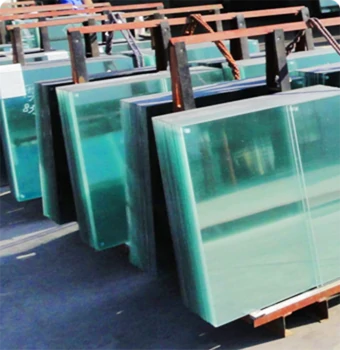The Versatile Uses of Tinted Glass
Tinted glass is a remarkable material that has gained significant traction in various industries due to its numerous benefits and aesthetic appeal. It is produced by adding colorants during the manufacturing process or by applying a thin film to clear glass. This type of glass is primarily known for its ability to reduce glare, control heat, and enhance privacy. As such, tinted glass has found extensive applications in residential, commercial, automotive, and architectural designs.
1. Residential Uses
In residential settings, tinted glass serves multiple purposes. Homeowners often choose tinted windows for their energy-saving properties. By filtering sunlight, tinted glass can significantly reduce heat buildup in living spaces. This not only keeps homes comfortable but also minimizes the reliance on air conditioning systems, leading to reduced energy costs. Additionally, tinted windows protect indoor furnishings from fading due to UV exposure, thereby extending the lifespan of carpets, curtains, and furniture.
Privacy is another essential consideration for many homeowners. Tinted glass provides an effective way to maintain personal space without sacrificing natural light. Living in urban environments, where homes are often closely positioned, having tinted windows allows residents to enjoy their interiors without the feeling of being overlooked. Moreover, the aesthetic appeal of tinted glass can enhance a home’s exterior, adding a modern touch to both traditional and contemporary designs.
2. Commercial Applications
In commercial buildings, tinted glass is not only functional but also contributes to the overall aesthetic of corporate identities. Many businesses opt for tinted glass in their storefronts and office buildings to create a sleek, professional appearance. This type of glass can also help regulate indoor climates, reducing energy consumption during peak hours. For instance, many offices benefit from tinted windows as they minimize glare on computer screens, improving workers' productivity and comfort.
Furthermore, tinted glass plays a vital role in enhancing security. By obscuring the view from outside, it makes it more difficult for potential intruders to see into offices or display areas, providing an additional layer of protection. This is particularly advantageous for businesses that house sensitive information or valuable merchandise.
tinted glass uses
3. Automotive Use
Tinted glass is particularly popular in the automotive industry. Car manufacturers often offer tinted windows as a factory option, emphasizing both style and functionality. The primary benefit of tinted auto glass is the reduction of heat and glare while driving. By blocking out a significant percentage of UV rays, tinted windows help to protect the occupants from sunburn and reduce the interior temperature of vehicles, leading to greater comfort during hot weather.
Moreover, tinted glass enhances privacy for passengers and can help deter theft by concealing valuables from potential thieves. Automotive tinting can also reduce the strain on air conditioning systems, which can lead to better fuel efficiency over time.
4. Architectural Design
Architects and designers frequently utilize tinted glass in large-scale projects, such as skyscrapers, shopping malls, and hotels. This material allows for innovative design solutions while addressing practical issues such as energy efficiency and comfort. Large expanses of tinted glass can create stunning visual effects, allowing natural light to flood interiors without the unpleasant heat and glare associated with unfiltered sunlight.
Sustainability is another important factor driving the use of tinted glass in architecture. Many modern buildings incorporate tinted windows as part of their energy conservation strategies. By leveraging advanced glass technologies, architects can design structures that meet or exceed energy performance standards, contributing to a greener environment.
Conclusion
In conclusion, tinted glass is a versatile and valuable material with myriad applications spanning residential, commercial, automotive, and architectural sectors. Its ability to enhance comfort, provide privacy, reduce energy costs, and improve aesthetics makes it a preferred choice for many. As advancements in glass technology continue to evolve, the uses of tinted glass will undoubtedly expand, paving the way for even more innovative solutions in the future. Whether it’s enhancing a home’s tranquility or contributing to an energy-efficient building, tinted glass stands out as a remarkable asset in today’s society.
 Afrikaans
Afrikaans  Albanian
Albanian  Amharic
Amharic  Arabic
Arabic  Armenian
Armenian  Azerbaijani
Azerbaijani  Basque
Basque  Belarusian
Belarusian  Bengali
Bengali  Bosnian
Bosnian  Bulgarian
Bulgarian  Catalan
Catalan  Cebuano
Cebuano  Corsican
Corsican  Croatian
Croatian  Czech
Czech  Danish
Danish  Dutch
Dutch  English
English  Esperanto
Esperanto  Estonian
Estonian  Finnish
Finnish  French
French  Frisian
Frisian  Galician
Galician  Georgian
Georgian  German
German  Greek
Greek  Gujarati
Gujarati  Haitian Creole
Haitian Creole  hausa
hausa  hawaiian
hawaiian  Hebrew
Hebrew  Hindi
Hindi  Miao
Miao  Hungarian
Hungarian  Icelandic
Icelandic  igbo
igbo  Indonesian
Indonesian  irish
irish  Italian
Italian  Japanese
Japanese  Javanese
Javanese  Kannada
Kannada  kazakh
kazakh  Khmer
Khmer  Rwandese
Rwandese  Korean
Korean  Kurdish
Kurdish  Kyrgyz
Kyrgyz  Lao
Lao  Latin
Latin  Latvian
Latvian  Lithuanian
Lithuanian  Luxembourgish
Luxembourgish  Macedonian
Macedonian  Malgashi
Malgashi  Malay
Malay  Malayalam
Malayalam  Maltese
Maltese  Maori
Maori  Marathi
Marathi  Mongolian
Mongolian  Myanmar
Myanmar  Nepali
Nepali  Norwegian
Norwegian  Norwegian
Norwegian  Occitan
Occitan  Pashto
Pashto  Persian
Persian  Polish
Polish  Portuguese
Portuguese  Punjabi
Punjabi  Romanian
Romanian  Russian
Russian  Samoan
Samoan  Scottish Gaelic
Scottish Gaelic  Serbian
Serbian  Sesotho
Sesotho  Shona
Shona  Sindhi
Sindhi  Sinhala
Sinhala  Slovak
Slovak  Slovenian
Slovenian  Somali
Somali  Spanish
Spanish  Sundanese
Sundanese  Swahili
Swahili  Swedish
Swedish  Tagalog
Tagalog  Tajik
Tajik  Tamil
Tamil  Tatar
Tatar  Telugu
Telugu  Thai
Thai  Turkish
Turkish  Turkmen
Turkmen  Ukrainian
Ukrainian  Urdu
Urdu  Uighur
Uighur  Uzbek
Uzbek  Vietnamese
Vietnamese  Welsh
Welsh  Bantu
Bantu  Yiddish
Yiddish  Yoruba
Yoruba  Zulu
Zulu 

